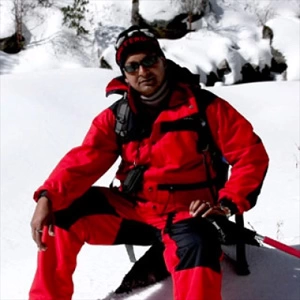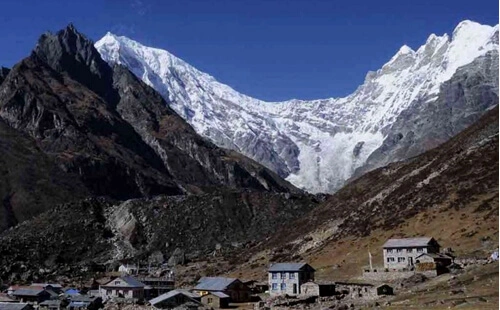Is the Langtang Valley Trek Beginners Friendly?
Yes, it is. One of the popular short treks in Nepal with challenges, most of the trekking routes inside the Langtang Trekking region are suitable for novices. Langtang Valley Trek of 10 days, Gosaikunda Lake Trek, Helambu Trek, Tamang Heritage Trek, Jugal Himal Panch Pokhari Trek, or the Ganesh Himal Singla Pass Trek. To complete these trails, you do not need prior trekking experience or climbing skills.
Usually, Syabrubesi serves as the trek starting point and is only about 122 to 140 km (76 to 87 miles) from the heart of Nepal, Kathmandu. Unlike other high-altitude treks such as the Everest Base Camp Trek, the Annapurna Base Camp Trek, or the short Ghorepani Poon Hill Trek, the Manaslu Circuit Trek, and the Kanchenjunga North and South Trek, the Langtang Valley Treks are easily accessible.
Understanding the Langtang Trekking Difficulty Level
The overall level of trekking to Langtang Difficulty in Nepal is considered easy to moderate. The trekking trails are well-marked and dotted with well-established teahouses, guest houses, and lodges; therefore, for seasoned trekkers and climbers used to high-altitude treks and climbs, Langtang treks and their difficulties can be easygoing. The logistical and Langtang trails are quite manageable.
The ascent is gradual and gives you enough time to adjust to the thin air with low presence of oxygen levels, and yes, you may complete the Langtang trip with your family members, including children and aged members. However, for walking about 5 to 7 hours on a daily basis, one must have a good level of physical fitness, and it is best done by understanding the potential challenges and preparing for the Langtang Trek Difficulties.
What are the factors of difficulties on the Langtang Trek?
While the Langtang Trek is moderate and beginner-friendly, it is not without the challenges of high-altitude treks and climbs in Nepal. These trekking challenges in the Langtang region are what make the journey adventurous and memorable, especially when you witness the shimmering glaciers and sky-towering snow-capped peaks like Langtang Lirung (7,227 m), Ganesh Himal, and Dorje Lakpa.
The Langtang Trek trail winds through rhododendron forests, especially stunning in spring as a variety of them freshly bloom along the route. Less crowded yak pastures and charming Tamang villages away from modern urbanization add much to the scenic, serene experience, and when you know the difficulties on the Langtang Trek, the Himalayan trek gets smoother. Here’s what makes the Langtang Trek difficult.
Is Kyanjin Gompa the highest point of the hiking journey to Langtang?
Specifically, it depends; even if you are following the standard Langtang Valley Hike route, it can vary. The main trail usually ends at about 3,870 m above sea level at Kyanjin Gompa, but those keen for more expansive mountain views and scenery can take a side trip to Tserko Ri viewpoint at approximately 4,984 m. Regardless, the Langtang Treks include embarking 3,000 m above sea level, which is considered an altitude-sickness-prone area.
With elevation gain comes a decrement in the level of oxygen, and you may spot symptoms of acute mountain sickness like headache, nausea, vomiting, and shortness of breath. If not taken care of on time, it can further escalate into HACE and HAPE; therefore, altitude is one of the major elements that increases the Langtang Trekking Difficulty Level. Golden rule: acclimatization hike up, sleep low. More atLangtang Trek Altitude.
Can children go trekking to Langtang Valley?
Yes, the difficulty of trekking to Langtang lies in maintaining endurance for several days of high-altitude hiking, which also implies that healthy children above 7 years old with a good level of physical fitness and determination can successfully complete the trekking journey to Langtang Valley. Get ready for some steep ascents and descents, rocky paths, and some landslide-prone areas.
The more prepared you are, the easier it gets to conquer the trekking challenges in the Langtang region. Consider light cardio and strength training at least a month before the trip departure date. Swimming, cycling, walking, jogging, lunges, planks, squats, and stair climbing—you may not need hardcore physical training, but these help to increase stamina and build core so you can complete the journey with ease.
How are the facilities on trekking trials to Langtang in Nepal?
One of the factors that adds to the Langtang Trek difficulties is the region's limited connectivity. Remote, modern facilities, including medical services, are an extremely privileged non-existence at higher altitudes. Beyond Lama Hotel, Wi-Fi and mobile network connections are spotty. Food and accommodation options can also be restricted to simple shared rooms, followed by a hearty staple meal of Dal-Bhat-Tarkari for lunch and dinner.
Hot showers, rooms with heating systems, and electricity are still scarce. The plus point is that it gives you ample opportunity to take a breath and connect with the pure nature, the Himalayan culture, and the majestic mountain ranges. A much-needed break from the fast-paced modernity where everything seems to have passed too quickly, full of chaos, pollutants, and hustles and bustles for survival.
When is the right time for trekking to the Langtang Himalayas?
In the Himalayas, weather is king. It is the deciding factor on whether you will even make it through the destination you are planning or not, including the Langtang Valley trekking for beginners. Short treks in Nepal with challenges mean that you have to put thought into choosing the right season for embarking so that you do not deal with unpredictable Himalayan weather calamities like floods, landslides, snowy trails, and extreme cold.
Spring and autumn, from March to May and September to November, are known for the most stable Himalayan weather, moderate temperatures, clear skies, and open mountain views. Spring additionally features fresh blooms of rhododendrons, while in autumn, you have chances of getting to participate in two of the largest festivals in Nepal, called Dashain and Tihar. With this, now you won’t have to deal with weather difficulties on the Langtang Trek.
Do you need mental readiness to complete the trek to Langtang?
Yes, long trekking hours, rugged trails, and limited infrastructure—on initial days, it can get overwhelming for anyone on Himalayan treks in Nepal. Therefore, it is a must that trekkers do research on the Langtang trekking and hiking trails and prepare themselves accordingly. Often, you trek with the backpack; you may hire porters to lift your gear and equipment, but there's also a limitation on how much they can carry at once.
Maximum 25 kg by one porter combined, shared between two trekkers. An absolute recommendation for the Langtang Valley Trek for beginners: to tackle this, you may hike to local terrain that resembles the Langtang Trekking route and its difficulties for better conditioning. Take your time to decide whether you are ready for the remote and rugged Himalayan voyages or not; meditation, yoga, and mindfulness are recommended.
How to conquer the Langtang Trek difficulties?
While life itself is unpredictable and we do not know which chapter unfolds next, there are always precautions that you can follow to make the most of the Himalayan odysseys in Nepal, including the Langtang Treks, whether you circuit the valley or go beyond it. To overcome the Langtang Trekking difficulties with ease, take the journey slowly, stay hydrated, and begin physical training 4-6 weeks before your trip.
Although trekking is possible year-round, including in winter, summer, and monsoon seasons, beginners should choose the best times to trek, which are from March to May and September to November, especially when equipped with the right gear and guidance from professionals like Adventure Himalayan Travels and Treks. To enjoy the adventure, hire a skilled guide to handle the trekking logistics.
Essential safety tips for successful Langtang Trekking
When with professional tour, trek, and travel operators like Adventure Himalayan Travels and Treks, who possess more than two decades of extensive experience in organizing memorable Himalayan endeavors not only in Nepal but also in Tibet and Bhutan, safety and satisfaction are paramount. For a further secure and enhanced experience, here’s the safety tip for the Langtang Valley Trek for you to follow and make the best out of the journey:
- Buy a comprehensive Travel insurance: Consider purchasing high-altitude travel insurance from local agents that covers medical bills, emergency helicopter evacuation, trip delays, and cancellations.
- Quality gears and equipment: Three layers of clothing, sturdy trekking boots, and hiking poles are essentials. You may choose to carry from your hometown or buy in Thamel; you can find a wide variety of them.
- First-aid Kits: Do not forget to carry your own first aid kits, including personal medications if taking any. Include altitude medication like Diamox, pain relievers, and bandages. Your guide does carry the essentials.
- Guides and Porters: While you may choose to hire a guide only, the best thing to do is book a trip with a reliable trekking agency like Adventure Himalayan Travels and Treks and enjoy a hassle-free trip, including the management of porters.
- Local SIM Card and Power Bank: For better communication and internet connectivity, consider buying local SIM cards like Ncell or NTC. Along with it, a high-voltage power bank is to charge your device in need.
Conclusion: Take your next steps with confidence!
The Langtang Treks, including the classic Langtang Valley Trek, are absolutely suitable for first-timers. Prepare wisely, respect the mountain’s challenges, and consider taking help from seasoned trek organizers like Adventure Himalayan Travels and Treks. Conquer difficulties with ease following the safety tips for the Langtang Valley Trek from knowledgeable locals trained and licensed for it; a smoother, authentic Himalayan trekking experience awaits you.
Bookings are now open for 2026 and 2027. Secure your spot in the Langtang Valley and delve deeper into its pristine natural beauty, cultural richness, and easy accessibility from Kathmandu. The moderate level of difficulties on the Langtang Trek means that for families with children and aged members, and those seeking pure Himalayan bliss without extreme high altitude, it is a dream place to be. Contact us and enjoy group discounts.
FAQS
Can you go for solo treks to Langtang?
Yes, solo trekking to Langtang without joining the group is possible, but it is a must that you are assisted by a professional local guide from a government-licensed trekking agency. Inside Nepal’s national park, restricted area, and conservation area, free individual trekkers have been strictly banned since April 1st, 2023.
What are the permits for trekking to Langtang?
Unlike trekking to restricted areas of Nepal, such as the Nar Phu Valley Trek, Tsum Valley Trek, and Phoskundo Lake Trek, trekking to Langtang requires only two permits: the Langtang National Park Permit and the Trekkers Information Management System (TIMS) card. It significantly decreases the logistical trekking challenges in the Langtang region.
Are there any cultural heritages on the Langtang Trekking Trails?
Yes, there are several cultural landmarks that you can visit in the Langtang Trekking region in Nepal, including Kyanjin Gompa, Langtang Village, and numerous local Tamang villages. Viewpoints such as Tserko Ri, Kyanjin Ri, and others are also places of reverence for locals, so respect the culture and trek responsibly.
Why opt for vegetarian meals on Himalayan Trek routes?
In the remote Himalayas, meat is often carried from low-altitude regions via humans or cattle, and it can take several days to do so; i.e., often it can be stale and can cause stomach issues. Therefore, to stay on the safe side while on trek days, try staying vegetarian; better yet, add garlic and ginger soup, a natural remedy for altitude sickness.
Is it possible to prevent acute mountain sickness?
Yes, acute mountain sickness (AMS) is preventable, and there are things that you can do to prevent it from getting severe. The key is proper acclimatization: hike up, sleep low, maintain your pace, rehydrate, and eat healthy. If you spot any symptoms, do not ascend further and descend immediately if possible.




